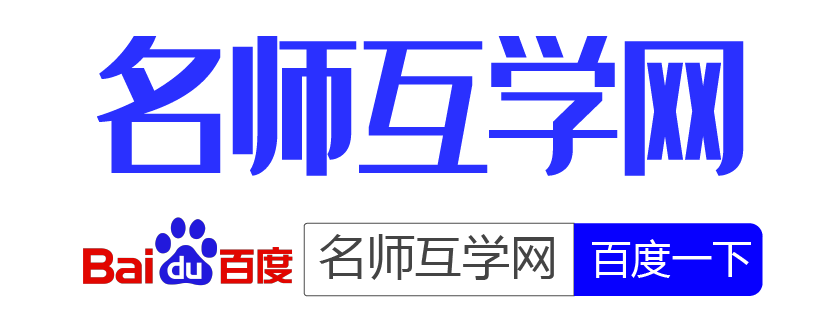题文
In general, people talk about two groups of colours warm colours and cool colours. Researchers in psychology think that there are also two groups of people people who prefer warm colours and people who prefer cool colours.The warm colours are red, orange and yellow. Where there are warm colours and a lot of light, people usually want to be active. People think that red, for example, is exciting. Sociable people, those who like to be with others, like red. The cool colours are green, blue and violet. These colours, unlike warm colours , are relaxing. Where there are cool colours, people are usually quiet. People who like to spend time alone often prefer blue.
Red may be exciting, but one researcher says that time seems to pass more slowly in a room with warm colours than in a room with cool colours. He suggests that a warm colour, such as red or orange is a good colour for a living room or restaurant. People who are relaxing or eating do not want time to pass quickly. Cool colours are better for offices or factories if the people who are working there want time to pass quickly.
Researchers do not know why people think some colours are warm and other colours are cool. However, almost everyone agrees that red, orange, and yellow are warm and that green, blue and violet are cool. Perhaps warm colours remind people of warm days and the cool colours remind them of cool days. Because in the north the sun is higher during summer, the hot summer sunlight appears yellow.
小题1:Which of the following colours belong to cool colours?A.Yellow, green.B.Blue, violet.C.Black, blue.D.Brown, white.小题2:Which of the following statements is not true?A.Sociable people like warm colours.B.Warm colours can make people excited.C.People who like to be with others don’t like red.D.Where there are warm colours, people want to be active.小题3:Which is the right colour for different rooms?A.Red or orange for offices.B.Orange for dining-rooms.C.Blue for bedrooms.D.Red for studies.小题4:What is the main idea of the last paragraph?A.It shows the reason why people think some colours are warm and others are cool.B.Warm colours remind people of warm days.C.Cool colours remind people of cool days.D.People have an agreeable opinion of warm colours and cool colours. 题型:未知 难度:其他题型
答案
小题1:B
小题2:C
小题3:B
小题4:A
解析
本文属于科普说明文,讲述的是暖色调和冷色调的话题,同时还仔细描述了这两种不同的颜色的具体使用以及为什么人民会认为有些颜色是暖色,有些颜色是冷色。
小题1:B 细节题。根据文章第二段第3行The cool colours are green, blue and violet.可知B项的两种颜色属于cool color。故B正确。
小题2:C 推理题。根据文章第二段People think that red, for example, is exciting. Sociable people, those who like to be with others, like red.可知喜欢红色的人通常都喜欢喝别人待在一起。故C项的说法是错误的。
小题3:B 细节题。根据文章第三段2,3行He suggests that a warm colour, such as red or orange is a good colour for a living room or restaurant. People who are relaxing or eating do not want time to pass quickly.可知orange适合于使用在餐厅这样的地方。故B正确。
小题4:A 段落大意题。根据本段第一句Researchers do not know why people think some colours are warm and other colours are cool.可知本段讨论的是人民为什么会认为某些颜色是暖色,某些颜色是冷色。故A正确。
考点
据考高分专家说,试题“In general, people t.....”主要考查你对 [科教类阅读 ]考点的理解。科教类阅读
科教类阅读的概念:
科教类阅读主要考查考生对书面语篇的整体领悟能力和接受及处理具体信息的能力。试题的取材,密切联系当前我国和世界经济、科技等方面的变化,有关数据的来源真实可信。
科教类文章阅读技巧:
一、材料特点:
这类文章的总体特点是:科技词汇多,句子结构复杂,理论性强,逻辑严谨。具体说来它有以下几个特点:
1、文章中词汇的意义比较单一、稳定、简明,不带感情色彩,具有单一性和准确性的特点。这类文章通常不会出现文学英语中采用的排比、比喻、夸张等修辞手法,一词多义的现象也不多见。
2、句子结构较复杂,语法分析较困难。为了描述一个客观事物,严密地表达自己的思想,作者经常会使用集多种语法现象于一体的长句。
3、常使用被动语态,尤其是一些惯用被动句式。
二、命题特点:
科普类阅读的主要命题形式有事实细节题、词义猜测题、推理判断题以及主旨概括题等,其中推理判断题居多。
三、应对策略:
1、要想做好科普英语阅读理解题,同学们就要注意平时多读科普知识类文章,学习科普知识,积累常见的科普词汇,从根本上提高科普英语的阅读能力。
2、要熟悉科普类文章的结构特点。科普类文章一般由标题(Head line),导语(Introduction),背景(Back ground),主体(Main body)和结尾(End)五部分构成。标题是文章中心思想高度而又精辟的概括,但根据历年的高考情况来看,这类阅读理解材料一般不给标题,而要同学们选择标题。导语一般位于整篇文章的首段。背景交待一个事实的起因。主体则对导语概括的事实进行详细叙述,这一部分命题往往最多,因此,阅读时,同学们要把这部分作为重点。结尾往往也是中心思想的概括,并与导语相呼应,命题者常在此要设计一道推理判断题。
3、在进行推理判断时,同学们一定要以阅读材料所提供的科学事实为依据,同时所得出的结论还应符合基本的科普常识。
科普类阅读应试策略:
【命题趋势】
阅读理解题主要考查考生对书面语篇的整体领悟能力和接受及处理具体信息的能力。试题的取材,密切联系当前我国和世界经济、科技等方面的变化,有关数据的来源真实可信。因此科普知识类文章是每年的必考题。分析历年的科普类文章我们不难发现以下特点:
1、文章逻辑性强,条理清楚,语法结构简单,用语通俗。
2、文章内容注重科技领域的新发现。内容新颖,从而使文章显得陌生,内容抽象复杂。
3、命题方面注意对具体细节的准确理解和以之为依据的推理判断。
4、以人们的日常行为或饮食健康入手,探讨利弊,诠释过程,阐述概念。
【应试对策】
许多考生在考试时感到困惑的是:为什么一些没有超越中学语法和词汇范围的篇章,读起来却不能正确理解,或者要花费很多时间才能读懂呢?这种现象的产生与阅读方法有很大的关系。例如,有的考生在考试时一见到文章就立刻开始读,结果读了半天,还不知道短文讲的是什么,试题要求了些什么,结果浪费了大量的时间,而阅读效果并不好。那么,怎样读效果才好呢?任何一种阅读方法或技巧的使用,都是由篇章特点和试题本身的要求决定的,应根据不同的体裁和试题要求采取不同的策略。
1、浏览。浏览的主要目的就是确定文章的体裁。如果文章属于人物传记、记叙文、故事、科普小品和有关社会文化、文史知识的文章,一般来说,应该先看看文章的试题考查内容,对题目类型做到心中有数,针对不同问题,在通读时有粗有细地去阅读,这样不仅能把握篇章的基本结构和逻辑线索,也能做好有关具体事实信息考查的试题。
2、挖掘寓意,掌握中心思想,推出结论。任何文章,作者在行文时都有一定的写作目的和主要话题。在通读篇章时应该吃透作者的写作意图,抓住文章的主题句,充分发挥自己的想象力和概括力,作出对中心思想的归纳和结论的推断。
3、把握篇章结构,利用上下文进行推测。高考中的阅读理解篇章往往是一个较完整的短文,其结构、思想,前后上下连贯统一。考试时应充分利用这一特点推测一些生词、短语在句中的含义,切莫盲目孤立猜测。
4、综观全篇,前后呼应。这是阅读理解的最后一步,在做完阅读理解题后,要立足于文章整体,再迅速读一遍短文,短文中的问题和答案的设置前后都是相关联的,有着一定的连续性,体现着文章的基本脉络。





